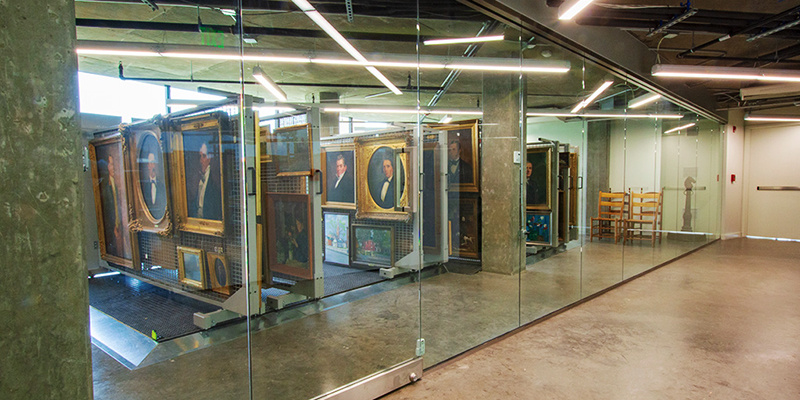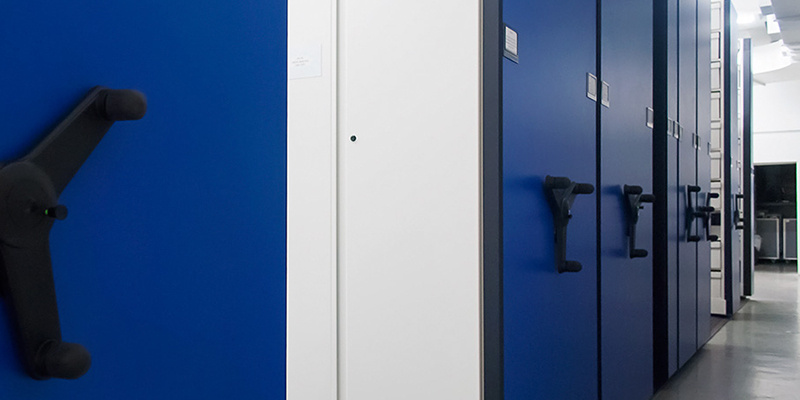Museums only have so much space to present their vast collection of artifacts, art, and interactive displays to the public. To remain fresh and relevant, they often cycle through their collections to keep people coming back. That means organized and accessible museum collections storage is essential for long-term success.
Maximizing museum storage is a challenge that impacts museums of all sizes — from the Louvre, the world’s most visited museum, attracting an average of 9 million visitors annually, to the World’s Smallest Museum in a 134-square-foot shed in Superior, Arizona.
"On average, only three to five percent of any museum's permanent collection can be displayed in public gallery spaces at any given time," reports the Western Museums Association. "This leaves the majority of a museum's collections in storage."

Plus, museum collections are constantly growing. Even with digitization efforts, adaptable, customized museum storage remains a great need. After all, the hundreds to millions of items in storage need to be accessible:
- Curators need access to stored collections to plan future exhibitions, assess items for loaning, and generate new collection ideas
- Researchers and educators may request specific objects for study and teaching purposes.
- Donors and museum members might be treated to behind-the-scenes storage tours.
- Restorers need ongoing access to items in storage to assess their conservation needs.
Maximizing Museum Collections Storage
While many museum staff focus on optimizing the public display areas, others work behind the scenes to maximize floor space for storage. Adaptable, customized products such as mobile carriages, bulk racks, suspension glides with shelves or drawers, and closed cabinets with trays can make a big difference.
The following case studies highlight examples of museums that have successfully optimized their museum collections storage:
The Filson Historical Society, Louisville, KY
After acquiring a parking lot adjacent to its property, the Filson Historical Society built a new 19,000-square-foot building for its more than 10,000 items including books, documents, and other treasures. The storage solutions used include:
- Mechanical-assist high-density compact shelving custom designed to the space
- Flat file storage case for smaller artwork and miniatures
- Storage cases for firearms, silver, canes, parasols
- Movable art racks

"Being able to come into the area with new shelving — from day one — has allowed us to place everything exactly where we want it to be," said Jim Holmberg, Filson Historical Society Curator. "And, we have room to grow."
Michael C. Carlos Museum, Emory University, Atlanta GA
With limited on-campus storage, as much as two-thirds of this museum's collection is stored off-site. That's where adjustable, customizable solutions helped make a difference, including:
The Delta Air Transport Heritage Museum, Hapeville, GA
Despite the sprawling size of this museum — over 68,000 square feet — its archive only occupies 4,000 square feet of that space. With new items arriving daily, the museum faced a storage crisis. "To a certain extent, we weren't sure of exactly what we had," said Preservation Manager Tina Seetoo.

In designing storage to best suit the space, the museum added:
- An 11-range mechanical-assist high-density storage system with open shelving
- Closed-door storage for historic airline uniforms, hats, purses, and shoes
- Textile racks for banners and flags
- Cantilever shelving for the museum's sizable book collection
Warren Lasch Conservation Center, Clemson University, North Charleston, SC
For years, artifacts raised from the Civil War-era submarine H.L. Hunley were stored in a Clemson University lab, putting them at risk due to humidity and HVAC issues. The Conservation Center resolved the issue by purchasing a pair of refurbished, 40-foot-long intermodal, refrigerated shipping containers.

These provided a secure environment with the following storage solutions:
- Museum cabinets, reinforced shelving, pull-out drawers, and a flat worktop for organic material in one container.
- Rosseau spider Mini-Racking, reinforced shelving, and modular heavy-duty drawers in the second container for heavier metal objects like ballast blocks, hatches, and pumps.
Designing Solutions for Your Needs
Patterson Pope’s storage experts are available to consult on the best solutions for your museum’s needs. We understand the importance of protecting and preserving your collection while promoting efficiency and cost-effectiveness. Whether you need archival shelving, conservation cabinets, high-bay mobile storage, or custom solutions for rare books, framed art, or textiles, we can help. Contact a storage specialist today.





















